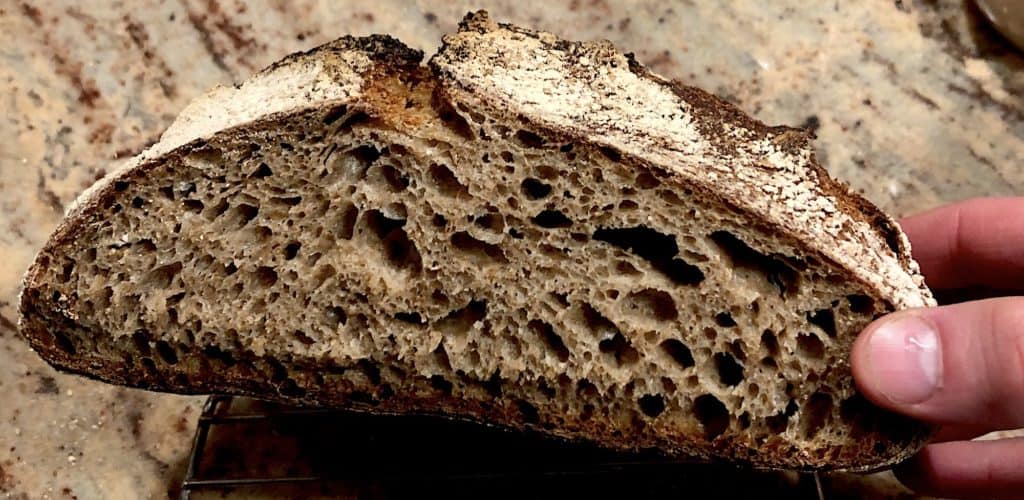Ever open up a recipe, all excited to bake some bread, just to be confronted with baker’s percentages? This system is designed to be easy and accurate, but it can be quite confusing if presented without explanation.
Read on to learn how to do bakers’s percentages.
Baker’s percentage (sometimes spelled bakers’ or even bakers) is all about relative weights. You can make as much dough as you want, because the recipe — more of a formula really — presents everything in weights are presented as a percentage of one another.
The Most Important Rule of Baker’s Percentage
The number one thing you need to know about baker’s math is that everything is relative to the flour. In other words, the flour is 100%. The other ingredients, like salt, water, and starter are presented as a percentage of the flour.
The most common discussion when uses baker’s percentage will be the hydration percentage, or how much water is used relatively to the amount of flour. So if you are using 1000 grams of flour, you might have 800 grams of water, or 80% hydration. The useful thing about this method is that if you want to use 2798 grams of flour instead of 1000, you can simply multiple 2798 by 0.80 and know you need 2239 grams of water.
When using baker’s percentage to make bread, flour is normally presented as 1000 grams, basically enough for two normal-sized loaves. This is fine for the home baker, but if you need to make one loaf or ten, the math can scale really easily.
One Cool Thing
While baker’s percentage has all sorts of historic reasons for existing (back before everyone had a digital scale), there are still uses today. Perhaps the best is that it allows bakers, even those with a limited amount of experience, to get an idea of how wet their dough should be. If your recipe calls for 65% hydration but you used slightly different flour from your last bake, then you have some idea of what to look for in your final dough.
The hydration percentage implies a certain wetness to the dough that gives experienced bakers a foundation to work towards. This is is a guiding point that is independent of variables, like humidity, ambient temperature, or variance from one brand (or even batch) of flour to the next.
More Than One Flour?
What happens when you are making a bread with more than one type of flour? Does the whole system break down? Not at all. When this happens you combine the weight of all the flour to make 100% and the rest of the ingredients come as a percentage of the total. This means you can mix flours without having to change all your math.
Baker’s Percentage vs True Percentage
Through out your use of baker’s percentage you should keep in mind that baker’s percentage is actually baking with ratios, with flour being 100%, 1 part, 1000 grams, or whatever reference unit you’d like to use.
True percentage is different because flour isn’t 100%, but rather some percentage of the total weight of all your ingredients. In this system that 1000 grams of flour in your baker isn’t 100% but a true percentage of, say, 50%.
Sample Bread Recipe
Here is a sample bread recipe using baker’s percentage.
- Water – 700 grams – 70%
- Salt – 20 grams – 2%
- Starter – 200 grams – 20%
- Flour – 1000 grams – 1000%
In this case the flour could be subdivided if you wanted to do more than one flour type — maybe 80% white flour, 10% whole wheat, and 10% rye.

